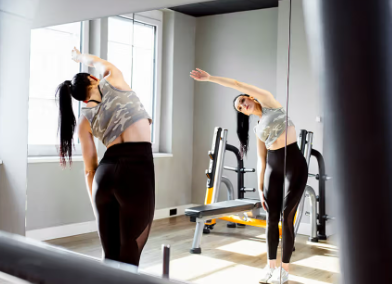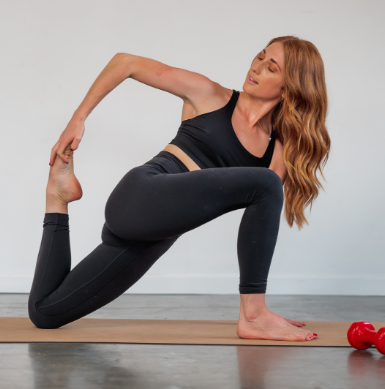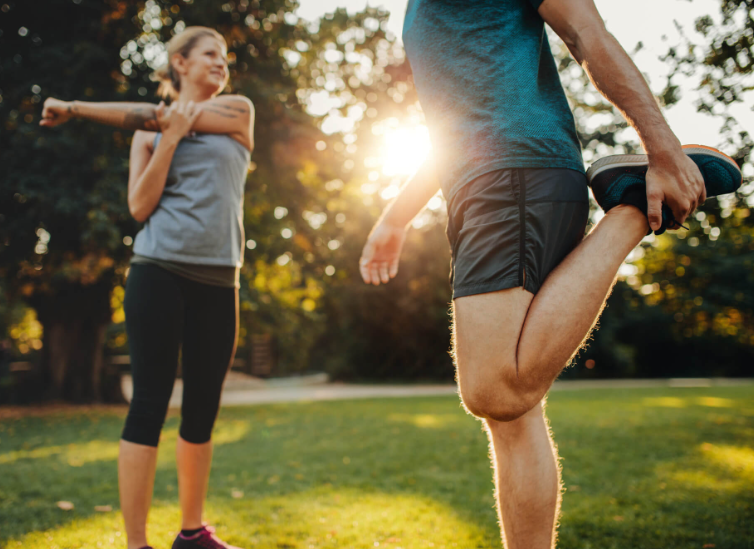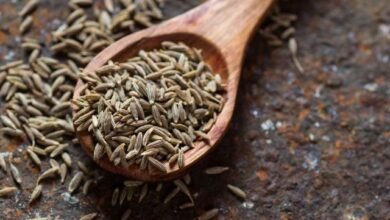Unlocking Performance Potential: 5 Types of Stretching Exercises for Optimal Results
Introduction – The Foundation of Flexibility
Flexibility is a cornerstone of overall fitness and performance. Whether you’re an athlete, a fitness enthusiast, or someone simply aiming for a healthier lifestyle, incorporating stretching exercises into your routine can significantly enhance your physical capabilities. Let’s delve into the world of stretching and explore five types of exercises that can elevate your performance to new heights.
The Importance of Stretching – Beyond the Basics
Before we dive into the specific types of stretching, it’s crucial to understand why stretching is a vital component of any fitness regimen. Stretching not only increases flexibility but also improves joint range of motion, enhances circulation, and reduces the risk of injuries. Moreover, incorporating various stretching techniques can prepare your muscles for activity, leading to improved performance during workouts and physical activities.
Dynamic Stretching – Energizing Your Body for Action

The Dynamic Duo – Stretching and Movement
Dynamic stretching involves active movements that mimic the motions you’ll perform during your workout or chosen activity. Unlike static stretches, dynamic stretching is characterized by continuous and controlled motions that gradually increase your heart rate and body temperature. This type of stretching is particularly effective as a warm-up, preparing your muscles for the demands of your upcoming exercise routine.
Dynamic Stretching Exercises – A Dynamic Warm-Up Routine
- Leg Swings: Stand next to a support, like a wall or a railing, and swing one leg forward and backward. Repeat for 10-15 swings on each leg to warm up the hip flexors and hamstrings.
- Arm Circles: Reach out and extend your arms in a circular motion. Make tiny circles at first, then progressively enlarge them. This dynamic stretch targets the shoulders and improves flexibility.
- High Knees: March without moving, raising your knees to the maximum extent feasible. This exercise engages the hip flexors, quads, and hamstrings, promoting increased blood flow and flexibility.
Static Stretching – Embracing Stillness for Deep Flexibility

The Power of Stillness – Static Stretching Principles
While dynamic stretching focuses on movement, static stretching involves holding a position to lengthen and relax the muscles. This type of stretching is often performed after a workout to improve flexibility and cool down the body. Static stretching is particularly effective for increasing the overall range of motion and preventing muscle tightness.
Essential Static Stretches for Improved Flexibility
- Hamstring Stretch: Sit on the floor with one leg extended straight and the other leg bent, sole of the foot against the inner thigh. Reach toward your toes to stretch the hamstrings.
- Chest Opener: Stand tall and clasp your hands behind your back. Straighten your arms and lift them slightly, opening up the chest muscles and promoting better posture.
- Seated Forward Bend: Sit with your legs extended in front of you and reach for your toes. Standing erect, clasp your hands behind your back as a chest opener.
Battle ropes have become a staple in fitness routines due to their ability to provide a full-body workout that targets strength, endurance, and cardiovascular fitness.
PNF Stretching – Leveraging Neuromuscular Facilitation
Unleashing the Power of PNF – A Dynamic Approach to Flexibility
Proprioceptive Neuromuscular Facilitation (PNF) is an advanced form of stretching that involves a combination of stretching and contraction of the targeted muscle group. PNF stretching is often done with a partner, and it engages the neuromuscular system to achieve deeper stretches and increased flexibility.
Partner-Assisted PNF Stretching Techniques
- Hamstring Stretch with Partner: Lie on your back and lift one leg while your partner gently pushes it towards your chest. Hold for a few seconds, and then resist as your partner tries to push your leg back down.
- Quad Stretch with Partner: While standing, bend one knee and bring your heel towards your buttocks. Your partner can assist by holding your ankle and gently pressing your foot towards your buttocks.
Ballistic Stretching – A Dynamic Burst of Energy
Harnessing Momentum – The Essence of Ballistic Stretching
Ballistic stretching involves using momentum and bouncing movements to push muscles beyond their normal range of motion. It is an intense form of stretching that requires caution and is not suitable for everyone. Ballistic stretching is often used by athletes and individuals with specific flexibility goals.
Examples of Ballistic Stretching Exercises
- Leg Swings (Bouncing): Stand next to a support and swing one leg forward and backward, incorporating a bouncing motion to increase the stretch intensity.
- Arm Swings (Bouncing): Swing your arms in circular or side-to-side motions, introducing a bouncing element to enhance the stretch. The upper back and shoulders are worked with this exercise.
Active Isolated Stretching – Precision in Motion
Isolation and Activation – The Principles of AIS
Active Isolated Stretching (AIS) involves isolating specific muscles and holding each stretch for only two seconds. This method emphasizes precise movements, activating the targeted muscles before stretching them. AIS is believed to improve flexibility without triggering the protective stretch reflex, allowing for safer and more effective stretching.
Incorporating AIS into Your Routine
- Neck Rotation: Sit or stand comfortably and slowly turn your head to one side, holding for two seconds. Repeat on the other side. This stretch targets the neck muscles and improves flexibility.
- To stretch your calf, place one foot forward and the other back while facing a wall. The rear leg should remain straight while the front knee is bent. After two seconds of holding, swap legs.
Conclusion – A Flexible Future Awaits
In conclusion, incorporating various types of stretching exercises into your fitness routine can unlock the full potential of your body. Dynamic stretching prepares your muscles for action, static stretching enhances flexibility, PNF stretching engages the neuromuscular system, ballistic stretching pushes boundaries with momentum, and active isolated stretching emphasizes precision. Integrating these techniques thoughtfully and consistently can lead to improved performance, reduced risk of injuries, and a more resilient and flexible body. As you embark on your journey to optimal health and fitness, remember that flexibility is not just a physical attribute but a key to unlocking your body’s potential. So, stretch, move, and embrace the transformative power of flexibility.







Carolina Bernard